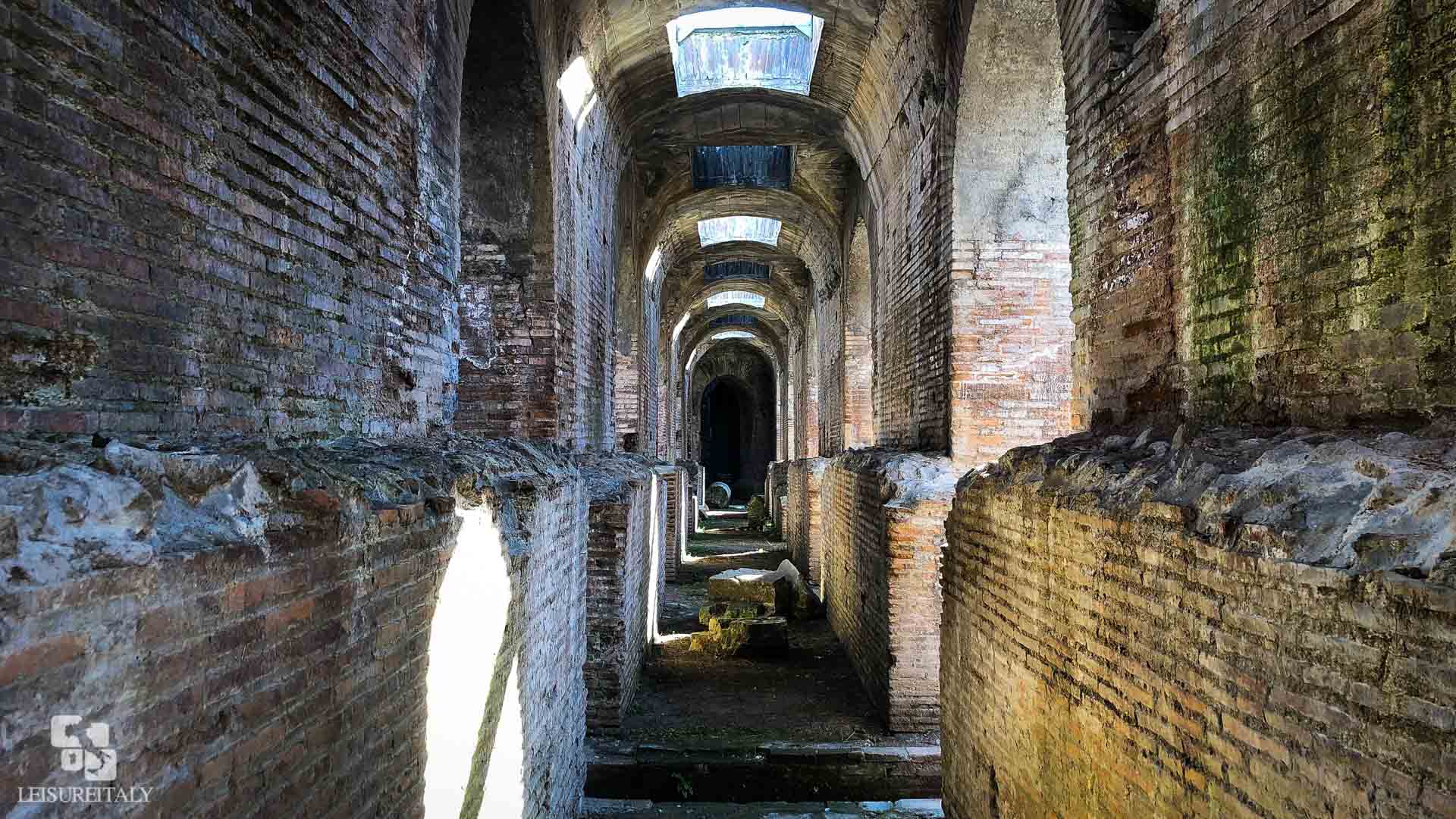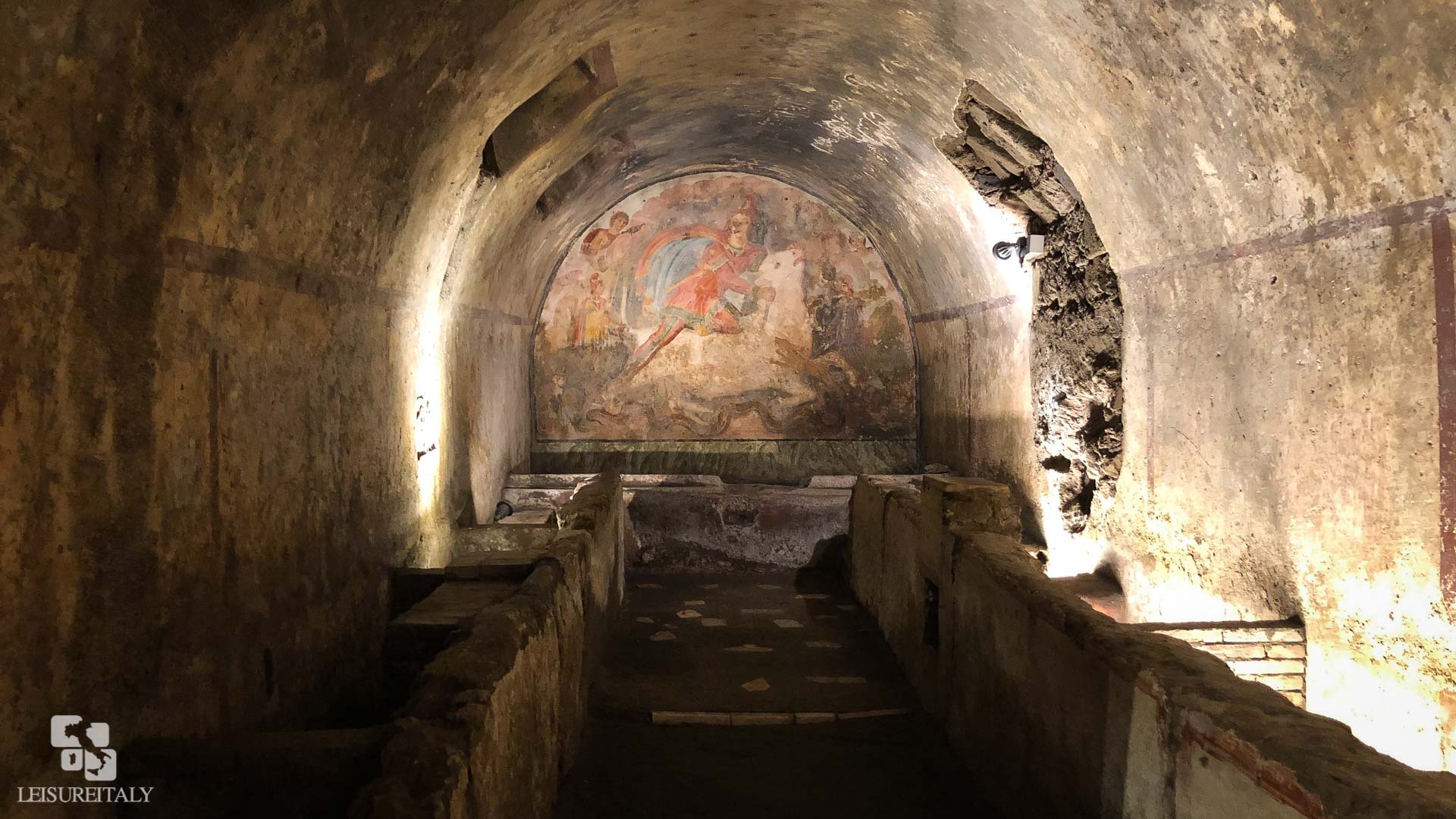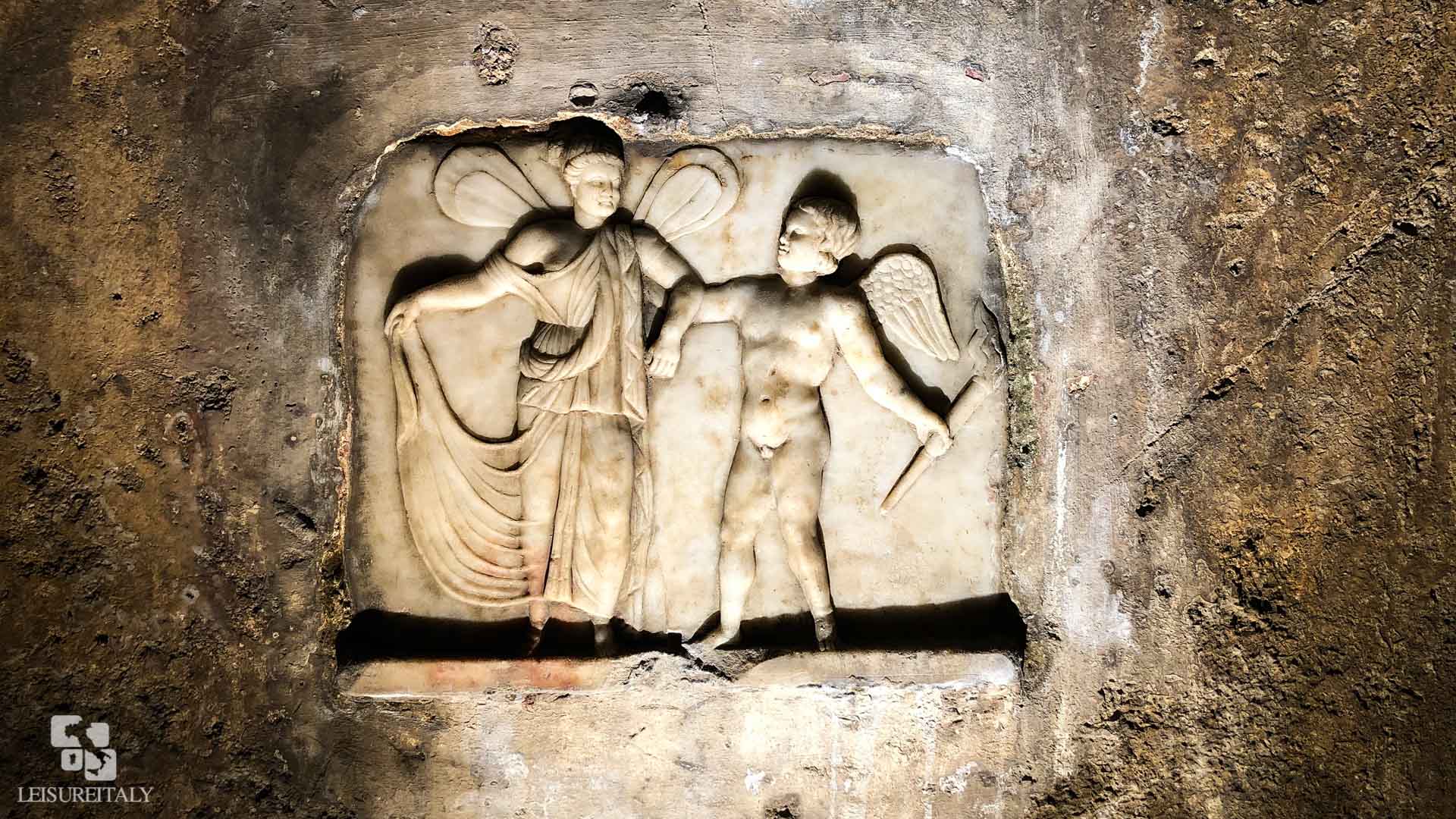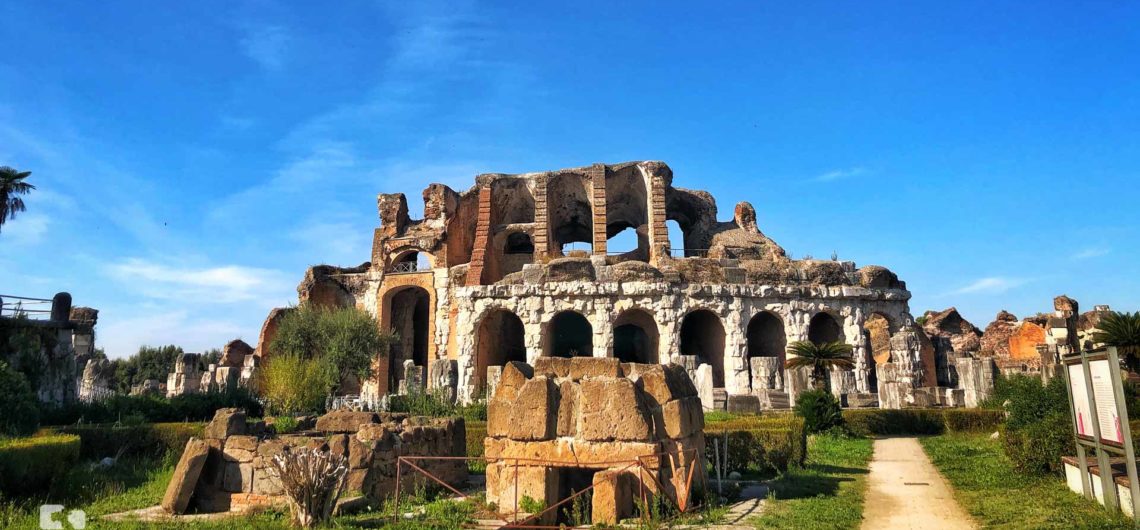Close your eyes and think about a Roman amphitheatre.
The first image that will appear in your mind will certainly be that of the famous Flavian Amphitheatre also called the Colosseum, the most majestic building left us by the Romans. But there are many other arenas in Italy that have hosted fierce combats over the centuries. Today we want to take you to discover an authentic wonder, unknown to the general public: let’s start our virtual tour of the famous Amphitheatre of Capua (or Anfiteatro Campano).
This majestic Roman amphitheatre in the city of Capua, is indeed second only to the Colosseum in size and was also the location of the first and most famous gladiator school. In this very area, the well-known revolt of Spartacus broke out in 73 BC, threatening the city of Rome for almost two years.
Today the ruins of this glorious ancient building can be found in the modern town of Santa Maria Capua Vetere in the province of Caserta: most of the beautiful stones of the amphitheatre is completely missing because it was reused during the Norman period to build the “Castello delle Pietre, while some of the ornamental busts which were originally used as keystones for the arches can be found today in the facade of the City Hall of Capua.
What remains, however, and can still be seen today, is the monumentality of the structure, which despite the various passages of history, has remained surprisingly intact. Being in the presence of these ruins is still a sight!
Table of Contents
A BIT OF HISTORY…
The ancient city of Capua was one of the most important cities in the entire Roman Empire, so important that Cicero compared it to the famous Carthage or Corinth, even defining it as other Rome or the other Rome. To celebrate this greatness, as was customary at the time, the emperor Augustus himself ordered the construction of a majestic amphitheatre. It was the first century BC and that was probably the first Roman arena built. But not all historians agree on the date of the amphitheatre’s construction (which would make it the oldest of all known amphitheatres); many claims that the current structure was instead built around 100 AD on the remains of an earlier amphitheatre. If this hypothesis is correct, then the earliest known amphitheatre would instead be the Amphitheatre of Pompeii, built in 70 BC. The emperors Adriano and Antonino Pio later renovated and embellished the entire complex with numerous statues, columns and various decorations and the official inauguration took place in 155 AD even if, as previously mentioned, it had been used for over a century!
After the fall of the Roman Empire, the amphitheatre was largely damaged by the Vandals and later sacked, along with the city of Capua, by the Saracens. The ruins of the amphitheatre were also used as a quarry of marble for the construction of the new Duomo, the Lombard Castle and many other buildings in the new nearby town established after the destruction of Capua itself. Only during the 18th century, the amphitheatre was finally declared by the Bourbons a national monument and the depredation stopped.
THE REVOLT OF SPARTACUS
As stated before, the Amphitheatre of Capua was the site of the first and most famous gladiator school. Numerous combatants were trained here before spilling their blood and sweat over the sand not only of this amphitheatre but also the Pompeian and the Colosseum ones. In 73 BC, the famous rebellion of Spartacus took place, with over 70 slave-gladiators escaping from the school itself and later defeating the Roman army sent to capture them. This rebellion broke out in response to the inhuman conditions to which gladiators were subjected during both the training and combats, but over time it found the consensus of all of the fugitive slaves, shepherds and poor peasants from the surroundings of Vesuvius. The battle ended 2 years later with the complete defeat of the rebels: Spartacus met his death on the field and about 6,000 prisoners were crucified by Crassus as a warning along the Appian Way. The rebels’ army of 120,000 men was defeated, but the events of the war influenced the Roman politics for the following centuries.

WHAT TO VISIT
The museum complex includes the ruins of amphitheatre itself, the museum of gladiators, and the underground mithraeum, one of the most beautiful and important sanctuaries dedicated to the god Mithras found anywhere in the world. The area surrounding the archaeological site is well maintained and includes a large lawn, a bar and, a book shop.
The Amphitheatre was a majestic architecture with a capacity of 60,000 spectators. The impressive building of Capua had an elliptical plan with imposing dimensions and structural features that recall those of the most famous Roman amphitheatre, the Colosseum, to the point that it’s believed that the Capua’s amphitheatre was indeed used as a model for the Colosseum itself. At the time of its splendour it was named to mean ‘round fortress’, but probably the name derived from the Germanic word for ‘bear den’, an allusion to the spectacular wild animal hunts that once took place in the area. The building had 4 floors adorned with several statues like the ones of Venus, Psyche, and Adonis. Like the famous Colosseum, the amphitheatre had four great entrances that were reserved to city magistrates, members of religious colleges and to other important personages who could not enter using the ordinary gates. They were also used during the processions or other ceremonies that preceded or concluded the gladiatorial combats.
The arena was surrounded by 5 different caveae with 4 enclosures (ima, media and summa cavea and a last level for those who bought the cheapest tickets) Only the ima cavea, the lowest level is still partly visible together with small sections of media cavea. The summa cavea and the attic section have entirely disappeared. A complex system of passages, including an elliptical one, lay beneath the arena. The underground level was a real labyrinth of tunnels and each of them led to the heart of the arena to stage sudden entrances, giving spectacular twists. Inside the arena itself there were also some of trap doors that were used to haul up spectacular elements into the cavea (trees, columns, boulders, decorative objects), which served as ‘sets’ for performances. They were also used to bring up the cages holding wild beasts used during the gladiator combats. It’s even possible to wander the underground level and see how the actors, gladiators and wild animals were kept and how they entered the upper level.
The Museums Of Gladiators next to the amphitheatre displays artefacts from the site along with a display of fighting gladiators, and a scale model of the amphitheatre. Here it’s possible to learn interesting details about the combatants’ training, lives and deaths. In one of the display cases can be seen the casts of gladiatorial weapons found in Pompeii here shown as samples: two helmets, a pair of greaves and a shoulder strap. A life-size diorama placed between right at the entrance of the museum represents a fight between gladiators and wild beasts: the retiarius, with net and trident, the sector with helmet and short sword, the thraex with a griffin on the helmet and the curved sword (sica) and the venator facing a lion. In the second room, the decoration of one of the vomitoria (accesses to the auditorium) has been completely rebuilt.

The Underground Mithraeum of the Ancient Capua, the Mithraeum was uncovered in 1922 during the excavation for the construction of a building, is situated 10 minutes walking distance from the Amphitheatre. This incredible underground crypt was probably built between the II and III centuries AD and it’s mostly famous for its cycle of wall paintings of exquisite workmanship. The main wall is indeed decorated with a unique fresco, representing the God Mithras slaying a bull dressed in oriental costume richly decorated and surrounded by six figures representing the sun, the moon, the ocean, land and two archers ministers of God (Cautes and Cautopates). It can be said that these paintings represent the only complete cycle of the Mithra’s cult.
The cult of Mithras has Eastern origins, and specifically of Persian ones. It was probably brought to Rome by the prisoners of war later. The presence of this marvellous shrine here in Capua is the testimony of the numerous followers that this cult had in this area, especially among the gladiators who were, in fact, former prisoners of war subsequently trained for the gladiatorial combats.
In short, historical events have made the Amphitheatre of Capua less preserved today than its Roman and Veronese ‘cousins’, but certainly endowed it with the indisputable charm of such a monumental work.
If you are on holiday in Campania, it is really worth a visit!

ANFITEATRO CAMPANO S. MARIA CAPUA VETERE (only in italian)
Via Roberto d’Angiò, 48
Open: During summer from Tuesday to Sunday 9.00 AM – 7.30 PM (last admission at 6.45 PM)
Closed on Monday
Tel: (+39) 081 2395653 – 081 2395666
Tickets (Valid also for the Anfiteatro Campano, and the Museo dei Gladiatori and Mitreo)
Full price: €2.50
Visitors under 18: free
Directions by train:
Maria Capua Vetere Station (15 min. walking distance from the train station)
If you desire a guided tour of the Amphetheatre of Capua please contact us!

Comments